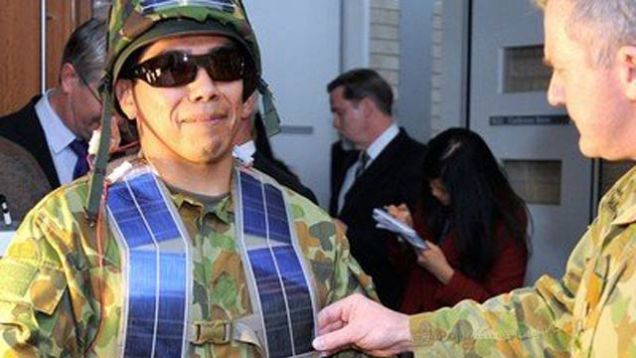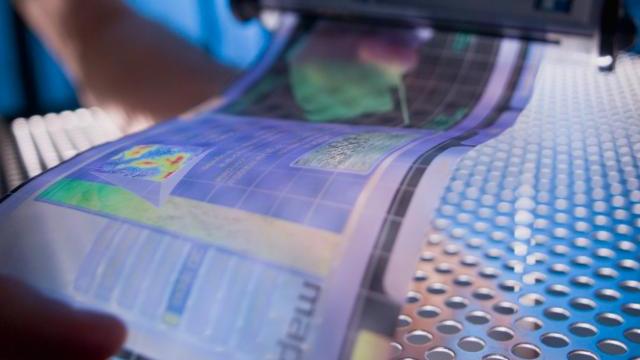How far does $US171 million go in Silicon Valley? A group of more than 160 companies, schools and government agencies are going to find out — thanks to a grant from the US Department of Defense that will fund a San Jose institute devoted to developing flexible tech.
The new effort comes from a Federal initiative launched few years ago by President Obama, which was designed to help spur innovation in manufacturing. That included the creation of “institutes” where researchers could focus on particular technologies — like the one devoted to 3D printing that opened in Ohio in 2012. This new institute, called the Manufacturing Innovation Institute for Flexible Hybrid Electronics, will be the seventh, and will be focused on building electronics than can stretch, flex, and move while maintaining connectivity.
Today at an event at NASA’s Moffett Airfield in Mountain View, a hangar that is now leased by Google, the Department of Defence is announcing that it’s kicking $US75 million towards the endeavour — while a separate group of private companies and schools are contributing $US90 million to the institute. The center will be located in San Jose, a location clearly chosen to reflect the companies getting involved in the initiative: Apple, HP, Boeing, the Palo Alto Research Center, and even GM are all involved, as well as schools like Cal Poly and Harvard, to Federal agencies like NASA’s Jet Propulsion Laboratory.

Picture: AP Photo/Jae C. Hong
So what, exactly, is this brain trust going to be working on in San Jose? “Flexible electronics” is an extremely broad category of tech — it encompasses everything from bendy batteries to the military wants flexible tech: Wired uniforms for the Army would make it easier to monitor soldiers’ vitals and even communicate with them. Or perhaps add deployable PVs to uniforms:

As Reuters points out, this kind of tech could be embedded in “ships or warplanes for real-time monitoring of their structural integrity.” Meanwhile, the WSJ describes a plug-in interface for planes:
For example, a new “bendable” electronic device for navigation of an aircraft wouldn’t have to be designed specifically for that plane, because such flexible electronics could be crammed into existing cracks and crevices to deliver the same capability — without redesigning the part of the fuselage, for example.
But there are plenty of interesting uses for flexible tech outside of our military industrial complex. The consortium of companies that’s behind today’s funding announcement, the FlexTech Alliance, held a workshop last year to bring together some of the participants.
NASA, for example, wants to design flexible elements for its probes and its astronauts, but is also interested in using it for a whole new type of craft that can be printed out and deployed in space with very little assembly — essentially, a spacecraft on a (very complex) printed chip. Here’s a glimpse of that future from a NASA report on the concept:
Atmospheric confetti. Inchworm crawlers. Blankets of ground penetrating radar. These are some of the unique mission concepts which could be enabled by a printable spacecraft. Printed electronics technology offers enormous potential to transform the way NASA builds spacecraft. A printed spacecraft’s low mass, volume and cost offer dramatic potential impacts to many missions
That’s a tantalising look at how flexible, printable electronics could ultimately be used — and it’s a lot more interesting than the flexible displays that could also come out of this initiative. But there’s also plenty of emerging overlap between NASA and the consumer tech world: PARC, in Palo Alto, is already working with NASA to prototype printed electronics for space.
A group of 162 distinct organisations all working towards a goal is its own unique challenge. The DoD is making a concerted effort to work with Silicon Valley companies this year, hoping to attract talent away from private enterprise and into the government’s own R&D labs. This kind of institute could be hybrid solution to its problems — though it remains to be seen whether the breadth of such a sprawling project will lend itself to the task of developing this technology.
